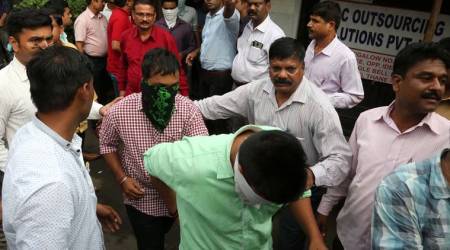 Students pose with one of the stupa fragments discovered near Vihar lake. Picture courtesy: Centre for Extra-Mural Studies
Students pose with one of the stupa fragments discovered near Vihar lake. Picture courtesy: Centre for Extra-Mural Studies
A TEAM of archaeologists from the University of Mumbai has, for the first time, found remnants of a Buddhist monastery after which the Vihar lake is believed to have been named. The discovery gives credence to an archaeological theory that the lake at the heart of Mumbai’s Sanjay Gandhi National Park was named after Vihar, a Buddhist monastery alongside a village by the same name.
“The monastery was believed to have been submerged in the lake or lost. Although there are inscriptional evidence of the monastery, an actual location was never known,” said Vinayak Parab, leader of one of the expeditions of the archaeologists.
An archaeological exploration project by the Centre for Extra-Mural Studies (CEMS), University of Mumbai, and the Sathaye College has discovered several stupa fragments at a hillock behind the Indian Institute of Technology, Powai. The exploration was a part of the second phase of the Salsette Survey that the CEMS undertook in 2015.
The discovery of the monastery site also sheds light on the ancient trade route used by Buddhist monks to reach Mahakali Caves and Elephanta Caves — both house rock-cut Buddhist caves dating back to the prehistoric era. “The monks, much like the traders, would enter through Kanheri, and go either towards Mahakali Caves through Jogeshwari or to Elephanta Caves through Trombay. The Vihar Caves was the central point from where they diverted,” Parab said, adding the discovery will provide insights into the city’s Buddhist history.
Suraj Pandit, director of the Salsette Survey, said the position of the monastery explained a large herd of Bahmani coins recovered from a nearby area in 1857 as recorded in the Gazette.
Mugdha Karnik, director of CEMS, said the team will further analyse the discoveries to get more information from the era. In 2016-17, the team had discovered four new rock-cut caves, but is yet to identify the era to which they belong.
Last year, the team had found evidence that urban settlements in Mumbai dated back to the pre-Portuguese era, contrary to popular belief that the city evolved with the arrival of the Portuguese. The exploration found relics that dated back to as early as 12th and 13th century.

